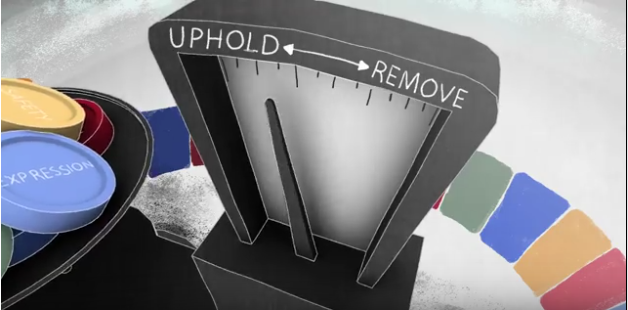A few months ago, I spoke with an organization that was under fire from vicious social media attacks. A group of disenchanted former members of the nonprofit organization (name of this nonprofit will remain anonymous) organized a campaign against the nonprofit, demanding specific changes. This, in and of itself, is not the issue. (Everyone has the right to organize!) When the organizers began to personally berate the family members of the executive director, such as taking the executive director’s son’s public Facebook updates and mocking them, then it turned into something else altogether. A bully pulpit. Personal. Cruel.
That’s when I went hunting for the community standards and abuse policies of each social network.
I normally write about the potential of social media to effect real change. Sadly, it’s not always the case that people act as their best selves online or on land. There are actions that we can take, as organizations, which may prevent some of these issues. When there are not, we can look at our options: organize a counter-campaign, ignore the attack or abuse, and/or report the abuse to relevant social networks where this occurs.
Preventing Abuse Before It Happens
There are a things you can do now that may stop, halt, or derail an attack against your organization.
1. Own all your domains, and some your attackers might buy.
Be sure to purchase at least the dot com, dot org, and dot net domain names for the name of your organization. Consider purchasing a second set of domain names with the word “sucks” at the end of it, such as: nameoforganizationsucks.com. Though, as Peter Campbell wrote in the first comment on this post, purchasing the negative name may very well be an exercise in futility.
2. Trademark your organization’s name.
I have seen copycat social media accounts trying to pass themselves off as the organization itself. When you have trademarked your name (and if possible, your logo), you need simply submit this documentation to the social media platform and the copycat account will be deleted.
3. Make sure that all images you use in publicity materials are also on your website.
One organization found itself in a quandary when a copycat Twitter account was using a known image that the nonprofit uses for one of its programs, but for some reason, this image wasn’t on the website. Twitter had no proof that the copycat account was not real.
4. Copyright your images and materials, and trademark your name and logo.
Most social channels have copyright and/or trademark infringement policies and procedures.
5. Where you manage an online group or space, create acceptable use community policies, and point them out regularly to the community.
If you manage an online space (Facebook page, Google group, LinkedIn group, etc.), create a set of community standards. Archwomen.org point to their community standards right on their website as does the British Stammering Association. Of course, it’s ideal to post your group rules within the group itself.
Where to Look for Help: Copyright or Trademark Infringement
All the major social channels have policies regulating copyright and trademark infringement. If a copycat social profile or any person is using your trademarked name, image or logo, file a complaint through the relevant social channel asking to remove the social profile using your trademarked property.
Personally Bullied or Harassed? Check the Social Media Bullying and Community Standards
I’ve seen groups go after the executive director or head of an organization personally; they will solicit friends to harass a board member, or post bullying and taunting messages about a staff person. A negative social media attack can get really personal.
Most social channels have community standards and acceptable use guidelines. In addition, they all have specific policies that address abuse and bullying.
